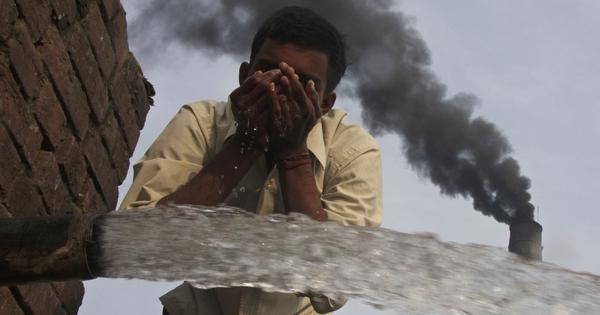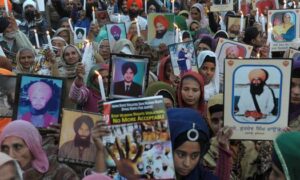
More than 17 lakh persons died in India in 2022 because of exposure to atmospheric pollution, an increase of 38% since 2010, according to a report by medical journal The Lancet.
The Lancet Countdown on Health and Climate Change 2025, released on Wednesday, was prepared by 128 experts from 71 academic institutions and United Nations agencies.
It estimated that the monetised value of premature mortality due to outdoor air pollution – including PM2.5 pollution – in India amounted to $339.4 billion, the equivalent of 9.5% of the country’s gross domestic product, in 2022.
PM2.5 refers to tiny airborne particulate matter that is about 30 times smaller than the width of a human hair and can easily be breathed into the lungs and the bloodstream.
According to the report, 7,52,000, or 44% of the air pollution-related deaths in 2022, were caused by the use of fossil fuels.
While coal accounted for 3,94,000 of the deaths, primarily from its consumption in power plants, the use of petrol for road transportation contributed to 2,69,000 deaths, it added.
This was because, till 2022, coal made up 46% of the total energy supply and 72% of total electricity in India, the report stated. The contribution of renewable energy to the total energy supply was 2%.
For road transport, 96% of the energy needs came from fossil fuels and electricity accounted for only 0.3%, added the report.
“The delay in transitioning away from fossil fuels and towards healthy, renewable energy, often undermined by scarcity of funding and of international cooperation is costing lives and straining the economy,” the report stated.
It added that in 2022, 58% of household energy came from highly polluting solid biofuels, while only 18% came from electricity.
In view of this, it said that household air pollution due to the use of polluting fuels was associated with 113 deaths per 1,00,000.
“Mortality rates associated with household air pollution were higher in rural than urban areas (125 per 100,000 in rural and 99 per 100,000 in urban),” the report stated.
This came days after the State of Global Air 2025 report claimed that polluted air in India was linked to 20 lakh deaths in 2023.
Responding to it, the Union government claimed that the figure was not “based on actual records”, adding that the statistical modelling technique used to arrive at the data “has its limitations”.
“There is no conclusive evidence to establish that such magnitude of health outcomes are direct impact of air pollution exclusively,” stated the Union Ministry of Environment.
These reports come at a time when the national capital region is reeling under worsening air quality.
The average Air Quality Index in Delhi on Wednesday at 2.05 pm was 273, according to data from the Sameer application, which provides hourly updates published by the Central Pollution Control Board.
The AQI in Ghaziabad was 253, in Noida it was 228 and in Gurugram, it was at 150.
An index value between 0 and 50 indicates “good” air quality, between 51 and 100 indicates “satisfactory” air quality and between 101 and 200 indicates “moderate” air quality. As the index value increases further, air quality deteriorates. A value of 201 and 300 means “poor” air quality, while between 301 and 400 indicates “very poor” air.
Air quality deteriorates sharply in the winter months in Delhi, which is often ranked the world’s most polluted capital. Stubble burning in Punjab and Haryana, along with the lighting of firecrackers, vehicular pollution, falling temperatures, decreased wind speeds and emissions from industries and coal-fired plants contribute to the problem.
Also read: Delhi’s failure to act against the biggest source of its air pollution – vehicles
📰 Crime Today News is proudly sponsored by DRYFRUIT & CO – A Brand by eFabby Global LLC
Design & Developed by Yes Mom Hosting






